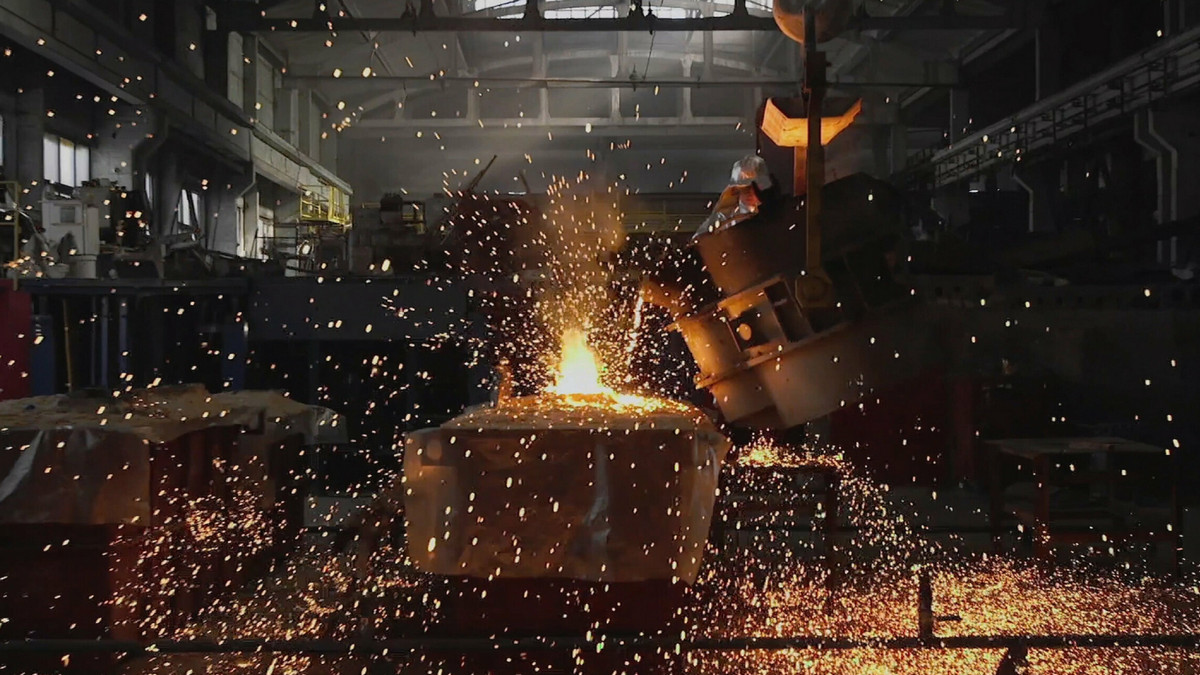With the rapid development of the iron and steel industry, the iron steel industry has gradually shown contradictions such as insufficient natural resources, excessive energy consumption per ton of output, and environmental pollution. As the second mining industry of the iron and steel industry, scrap steel resources have the advantages of saving energy, reducing pollution, protecting the environment, recycling, etc., and its influence will be increasing.
What is a Metal Shredder?
A metal crusher is a professional machine for crushing and processing large-sized solid metal materials to the required size. The metal shredder is used for shearing and crushing various strip-shaped, spiral-shaped, and flake-shaped metal chips cut by metal processing machine tools. Metal shredder is an ideal equipment for ferroalloy smelting, metal steel scrap, steel scrap, metal scrap recycling, and other enterprises. The dual-shaft crusher is the first choice for crushing brittle materials with medium hardness or below, such as car chips and water-resistant materials.
According to the size of the crushed material or crushed material, the crusher can be divided into coarse crusher, medium crusher, fine mill, and ultra-fine mill.
What is the Structure of the Metal Shredder?
The metal shredder is mainly composed of a worm gear motor, a casing, a frame, a combined helical cutter head, a driving shaft, a driven shaft, a large gear, a small gear, and other parts. Metal shredder-related equipment includes metal shredder, metal shredder, briquette shredder, large metal shredder, scrap shredder production line, and other equipment.
How Does a Metal Shredder Work?
Basic concept:
- There are four kinds of external forces applied to the solid in the crushing process: rolling, shearing, impact, and grinding.
- Press rolling is mainly used for coarse and medium crushing, and is suitable for the crushing of hard materials and bulk materials.
- Shearing is used for fine crushing, suitable for the crushing of tough materials.
The impact is mainly used for medium crushing, fine grinding, and ultra-fine grinding, and is suitable for the crushing of brittle materials.
- Grinding is used in fine grinding and ultra-fine grinding, suitable for the crushing of small pieces and fine particles. The actual crushing process is often several external forces acting at the same time.
Working principle:
The core principle of the metal crusher is to use the basic principle of hammering. Driven by a high-speed and high-torque motor, the hammer on the rotor of the main machine takes turns hitting the object to be broken into the cavity, and passes through the lining plate and the hammer. The space formed between them will tear the objects to be broken into pieces that meet the specifications. According to the working conditions of the crusher, it can be divided into a dry system, wet system, and semi-wet system. The dry system mainly means that the crushed objects must pass through the air cyclone sorting system to separate the metal and non-metal, and the whole system is equipped with a dust removal device. A wet system refers to spraying water at the same time as crushing and washing with water at the same time as sorting. The semi-wet system only sprays a small amount of water when it is required for crushing to prevent dust and does not clean.
Metal shredders can be roughly divided into:
- Use double-axis or single-axis low-speed rotation, and use the cutter head to cut, cut, tear, and pull the material. Directly connected to the worm gear reduction motor, which is directly installed on the driving shaft of the crusher, and is transmitted to the driven shaft through the gear speed change, so that the moving knife of the driving shaft and the stationary knife disc on the casing form a relative movement. The helical tooth cutter discs on the driving shaft are arranged in a staggered manner, so that after entering the material, it is simultaneously squeezed, torn, and sheared, so that the material is broken.
- Use the high-speed rotating impeller to agitate and break the long metal chips. The high-speed rotating (about rpm) main shaft relates to multiple round steel plates in series, and the round plates relate to the main shaft to rotate. The circular plate is equipped with a small gear made of manganese steel around it. The pinion turns freely on its small shaft. The long and messy metal scraps enter the machine from the top port, are twisted by the gears on the high-speed rotating steel plate, torn into small pieces, and flow out from the sieve holes at the bottom. size is selected.
Features of Metal Crusher:
The structure is stable and compact, the operation and maintenance are convenient, and the conveyor is loaded, which improves the work efficiency and realizes the automation of the operation. The discharge port is equipped with a magnetic separation device, which completely separates iron and other impurities to make the best use of it. The crushed materials are clean and bright, which can directly meet the requirements of feeding into the furnace. The hammer head and lining plate are made of cast high manganese steel, which prolongs the life of the machine and reduces the cost of transportation and manpower. The metal crusher has a stable and compact structure, easy maintenance, more than 95% paint removal effect, high output, and a large profit margin. The feeding of the conveyor realizes the automatic feeding, and the discharge port is equipped with a magnetic separation device to realize the separation of iron and other impurities. The crushed materials can be large or small, occupying a small area, and the crushed materials can directly meet the requirements of fine material feeding into the furnace. It is suitable for steel mill-affiliated enterprises, professional scrap processing and distribution enterprises, and various waste recycling enterprises.
The Advantages of Metal Powder:
- Volume reduction: The obvious direct effect is that it can greatly reduce the volume of scrap metal. After the volume is reduced, it is easy to transport and load and unload transport efficiently.
- Easy to load and unload: Because of the irregular characteristics of scrap metal, it is very troublesome to load and unload, especially all kinds of scrap metal with edges and corners. When loading, care should be taken to avoid injury caused by the accidental collision of people or objects. Too wide or slip out of the car. The scrap metal processed by the metal shredder is small spherical particles of the same size, which can reduce the safety risk whether it is loading, unloading, or transporting.
- Re-melting: The reason why scrap metal needs to be recycled is that it can be re-melted, because various materials may be attached to the surface of scrap metal, but after being processed by the metal crusher, the materials are beaten and squeezed into the crushing chamber of the equipment. After various physical actions such as pressing, tearing, and collision, it can completely remove various impurities covering the metal surface in a large area. Improve the purity of scrap metal, turn it into high-quality raw materials, and improve the recycling value of scrap metal.







.png)






